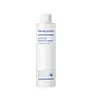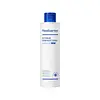What's inside
What's inside
 Key Ingredients
Key Ingredients

 Benefits
Benefits

 Concerns
Concerns

 Ingredients Side-by-side
Ingredients Side-by-side

Water
Skin ConditioningDipropylene Glycol
HumectantGlycerin
HumectantButylene Glycol
Humectant1,2-Hexanediol
Skin ConditioningHydroxyethyl Urea
HumectantHydroxyacetophenone
AntioxidantPanthenol
Skin ConditioningGlycosyl Trehalose
Emulsion StabilisingCarbomer
Emulsion StabilisingHydrogenated Starch Hydrolysate
HumectantAllantoin
Skin ConditioningButyrospermum Parkii Butter
Skin ConditioningCaprylyl/Capryl Glucoside
CleansingBetaine
HumectantHydrogenated Lecithin
EmulsifyingSodium Phytate
Polyglyceryl-10 Laurate
Skin ConditioningSodium Hyaluronate
HumectantPolyglyceryl-10 Myristate
Skin ConditioningArginine
MaskingHelianthus Annuus Seed Oil
EmollientOlea Europaea Fruit Oil
MaskingPolyglyceryl-10 Stearate
Skin ConditioningLactobionic Acid
BufferingGlyceryl Caprylate
EmollientBis-Capryloyloxypalmitamido Isopropanol
EmollientCapryloyl Salicylic Acid
ExfoliatingDihydroxyisopropyl Palmoylpalmamide
HumectantEctoin
Skin ConditioningLinoleic Acid
CleansingMadecassoside
AntioxidantMyristoyl/Palmitoyl Oxostearamide/Arachamide Mea
Skin ConditioningPhytosterols
Skin ConditioningPogostemon Cablin Leaf Oil
MaskingSalvia Officinalis Oil
MaskingCandida Bombicola/Glucose/Methyl Rapeseedate Ferment
AntimicrobialElettaria Cardamomum Seed Oil
MaskingGlycolipids
Skin ConditioningTartaric Acid
BufferingAnthemis Nobilis Flower Oil
MaskingMentha Arvensis Leaf Oil
MaskingJuniperus Mexicana Oil
MaskingPropanediol
SolventSodium Hyaluronate Crosspolymer
HumectantHydrolyzed Glycosaminoglycans
HumectantBenzyl Glycol
SolventHydrolyzed Hyaluronic Acid
HumectantHydroxypropyltrimonium Hyaluronate
Ethylhexylglycerin
Skin ConditioningSodium Acetylated Hyaluronate
HumectantHyaluronic Acid
HumectantRaspberry Ketone
MaskingWater, Dipropylene Glycol, Glycerin, Butylene Glycol, 1,2-Hexanediol, Hydroxyethyl Urea, Hydroxyacetophenone, Panthenol, Glycosyl Trehalose, Carbomer, Hydrogenated Starch Hydrolysate, Allantoin, Butyrospermum Parkii Butter, Caprylyl/Capryl Glucoside, Betaine, Hydrogenated Lecithin, Sodium Phytate, Polyglyceryl-10 Laurate, Sodium Hyaluronate, Polyglyceryl-10 Myristate, Arginine, Helianthus Annuus Seed Oil, Olea Europaea Fruit Oil, Polyglyceryl-10 Stearate, Lactobionic Acid, Glyceryl Caprylate, Bis-Capryloyloxypalmitamido Isopropanol, Capryloyl Salicylic Acid, Dihydroxyisopropyl Palmoylpalmamide, Ectoin, Linoleic Acid, Madecassoside, Myristoyl/Palmitoyl Oxostearamide/Arachamide Mea, Phytosterols, Pogostemon Cablin Leaf Oil, Salvia Officinalis Oil, Candida Bombicola/Glucose/Methyl Rapeseedate Ferment, Elettaria Cardamomum Seed Oil, Glycolipids, Tartaric Acid, Anthemis Nobilis Flower Oil, Mentha Arvensis Leaf Oil, Juniperus Mexicana Oil, Propanediol, Sodium Hyaluronate Crosspolymer, Hydrolyzed Glycosaminoglycans, Benzyl Glycol, Hydrolyzed Hyaluronic Acid, Hydroxypropyltrimonium Hyaluronate, Ethylhexylglycerin, Sodium Acetylated Hyaluronate, Hyaluronic Acid, Raspberry Ketone
Water
Skin ConditioningGlycerin
HumectantPropanediol
SolventDimethicone
EmollientHelianthus Annuus Seed Oil
EmollientGlyceryl Stearate
EmollientXylitol
HumectantSodium Hyaluronate Crosspolymer
HumectantHydrolyzed Glycosaminoglycans
HumectantSodium Hyaluronate
HumectantHydrolyzed Hyaluronic Acid
HumectantHyaluronic Acid
HumectantButylene Glycol
HumectantSorbitan Laurate
EmulsifyingHydroxyethylcellulose
Emulsion StabilisingAcetyl Dipeptide-1 Cetyl Ester
Skin ConditioningPanthenol
Skin ConditioningBeta-Glucan
Skin ConditioningMadecassoside
AntioxidantMyristoyl/Palmitoyl Oxostearamide/Arachamide Mea
Skin ConditioningCeramide NP
Skin ConditioningBis-Capryloyloxypalmitamido Isopropanol
EmollientXylitylglucoside
HumectantAnhydroxylitol
HumectantGlucose
HumectantAllantoin
Skin ConditioningPolyglyceryl-4 Caprate
EmulsifyingHydroxypropyl Methylcellulose
Emulsion StabilisingCarbomer
Emulsion StabilisingSodium Polyacrylate
AbsorbentCaprylic Acid
CleansingRaspberry Ketone
MaskingEthylhexylglycerin
Skin ConditioningSodium Phytate
Benzyl Glycol
SolventCaprylyl Glycol
Emollient1,2-Hexanediol
Skin ConditioningMentha Viridis Leaf Oil
AstringentMentha Viridis Extract
MaskingCitrus Nobilis Peel Oil
MaskingPelargonium Graveolens Flower Oil
MaskingThymus Vulgaris Oil
MaskingEucalyptus Globulus Leaf Oil
PerfumingBarosma Betulina Leaf Extract
PerfumingWater, Glycerin, Propanediol, Dimethicone, Helianthus Annuus Seed Oil, Glyceryl Stearate, Xylitol, Sodium Hyaluronate Crosspolymer, Hydrolyzed Glycosaminoglycans, Sodium Hyaluronate, Hydrolyzed Hyaluronic Acid, Hyaluronic Acid, Butylene Glycol, Sorbitan Laurate, Hydroxyethylcellulose, Acetyl Dipeptide-1 Cetyl Ester, Panthenol, Beta-Glucan, Madecassoside, Myristoyl/Palmitoyl Oxostearamide/Arachamide Mea, Ceramide NP, Bis-Capryloyloxypalmitamido Isopropanol, Xylitylglucoside, Anhydroxylitol, Glucose, Allantoin, Polyglyceryl-4 Caprate, Hydroxypropyl Methylcellulose, Carbomer, Sodium Polyacrylate, Caprylic Acid, Raspberry Ketone, Ethylhexylglycerin, Sodium Phytate, Benzyl Glycol, Caprylyl Glycol, 1,2-Hexanediol, Mentha Viridis Leaf Oil, Mentha Viridis Extract, Citrus Nobilis Peel Oil, Pelargonium Graveolens Flower Oil, Thymus Vulgaris Oil, Eucalyptus Globulus Leaf Oil, Barosma Betulina Leaf Extract
Ingredients Explained
These ingredients are found in both products.
Ingredients higher up in an ingredient list are typically present in a larger amount.
1,2-Hexanediol is a synthetic liquid and another multi-functional powerhouse.
It is a:
- Humectant, drawing moisture into the skin
- Emollient, helping to soften skin
- Solvent, dispersing and stabilizing formulas
- Preservative booster, enhancing the antimicrobial activity of other preservatives
Allantoin is a soothing ingredient known for its protective and moisturizingg properties. Because of this, it is often added to products with strong active ingredients.
Studies show higher concentrations of this ingredient can promote wound healing.
Though it can be derived from the comfrey plant, allantoin is produced synthetically for cosmetic products to ensure purity.
Learn more about AllantoinWe don't have a description for Benzyl Glycol yet.
We don't have a description for Bis-Capryloyloxypalmitamido Isopropanol yet.
Butylene Glycol (or BG) is used within cosmetic products for a few different reasons:
Overall, Butylene Glycol is a safe and well-rounded ingredient that works well with other ingredients.
Though this ingredient works well with most skin types, some people with sensitive skin may experience a reaction such as allergic rashes, closed comedones, or itchiness.
Learn more about Butylene GlycolCarbomer is a polymer of acrylic acid. Its main role is to create a gel consistency.
A high amount of carbomer can cause pilling or balling up of products. Don't worry, most products contain 1% or less of carbomer.
Ethylhexylglycerin (we can't pronounce this either) is commonly used as a preservative and skin softener. It is derived from glyceryl.
You might see Ethylhexylglycerin often paired with other preservatives such as phenoxyethanol. Ethylhexylglycerin has been found to increase the effectiveness of these other preservatives.
Glycerin is already naturally found in your skin. It helps moisturize and protect your skin.
A study from 2016 found glycerin to be more effective as a humectant than AHAs and hyaluronic acid.
As a humectant, it helps the skin stay hydrated by pulling moisture to your skin. The low molecular weight of glycerin allows it to pull moisture into the deeper layers of your skin.
Hydrated skin improves your skin barrier; Your skin barrier helps protect against irritants and bacteria.
Glycerin has also been found to have antimicrobial and antiviral properties. Due to these properties, glycerin is often used in wound and burn treatments.
In cosmetics, glycerin is usually derived from plants such as soybean or palm. However, it can also be sourced from animals, such as tallow or animal fat.
This ingredient is organic, colorless, odorless, and non-toxic.
Glycerin is the name for this ingredient in American English. British English uses Glycerol/Glycerine.
Learn more about GlycerinHelianthus Annuus Seed Oil is the oil derived from the seeds of a Sunflower. Sunflower seed oil is non-fragrant. It is an emollient, meaning it helps to soften the skin.
Sunflower seed oil contains many fatty acids. The fatty acids found in sunflower seeds include (from highest amount to least): linoleic acid, myristic acid, palmitic acid, stearic acid, arachidic acid, oleic acid, and linolenic acid.
These fatty acids help the skin create ceramides. Ceramides play a role in repairing the skin barrier.
Helianthus Annuus Seed Oil helps moisturize the skin. This in turn helps the skin look more rejuvenated and smoother.
Sunflowers are rich in vitamin E.
Historians believe Indigenous cultures of North America domesticated sunflowers before corn. Thus they relied on sunflower oil for a variety of uses. One such use is moisturizing skin and hair.
Sunflower seed oil may not be fungal acne safe. We recommend speaking with a professional if you have any concerns.
Learn more about Helianthus Annuus Seed OilHyaluronic acid is naturally found in healthy skin. It is a humectant, meaning it draws moisture to your skin.
This ingredient helps hydrate, soothe, and protect the skin.
What makes hyaluronic acid so hydrating? It has the capacity to bind or hold large amounts of water.
Fun fact: It is already naturally found in our bodies, such as the fluids of our eyes and our joints.
Studies find this ingredient to have anti-inflammatory and anti-microbial properties. This can help speed up wound-healing.
Hyaluronic acid can be irritating if the molecule has a low-molecular weight, or if the molecules are small.
One study found low-molecular weight hyaluronic acid to be pro-inflammatory, meaning some people may experience irritation. This is because our bodies use hyaluronic acid in the wound-healing process to signal to our bodies, via irritation, that something needs healing.
The same study found high-molecular weight hyaluronic acid to be anti-inflammatory.
These are some other common types of Hyaluronic Acid:
Learn more about Hyaluronic AcidWe don't have a description for Hydrolyzed Glycosaminoglycans yet.
Hydrolyzed Hyaluronic Acid is a form of hyaluronic acid. It is created by the hydrolysis of hyaluronic acid with a high molecular weight. Once created, Hydrolyzed Hyaluronic Acid has a low molecular weight.
Low molecular weight HA has been shown to hydrate and increase elasticity of the skin. Increasing elasticity is also associated with reduction of wrinkle depth.
One study found topical low molecular weight hyaluronic acid may be considered for the treatment of rosacea in the adult population. However, we always recommend speaking with a professional about your skin concerns.
Hyaluronic acids are a humectant. This means they draw moisture from the air. Hyaluronic acids help moisturize, soothe, and protect the skin.
Read more about other common forms of hyaluronic acid:
Learn more about Hydrolyzed Hyaluronic AcidMadecassoside comes from the super popular skin-soothing ingredient, Centella asiatica. It is one of four active compounds found in the extract of Centella Asiatica.
Madecassoside has antioxidant, anti-inflammatory, and hydrating properties. It contains fatty acids, amino acids, beta-carotene, and phytochemicals.
One study found using Madecassoside with ascorbic acid helped reduce the signs of aging and improved skin hydration.
Learn more about MadecassosideWe don't have a description for Myristoyl/Palmitoyl Oxostearamide/Arachamide Mea yet.
Panthenol is a common ingredient that helps hydrate and soothe the skin. It is found naturally in our skin and hair.
There are two forms of panthenol: D and L.
D-panthenol is also known as dexpanthenol. Most cosmetics use dexpanthenol or a mixture of D and L-panthenol.
Panthenol is famous due to its ability to go deeper into the skin's layers. Using this ingredient has numerous pros (and no cons):
Like hyaluronic acid, panthenol is a humectant. Humectants are able to bind and hold large amounts of water to keep skin hydrated.
This ingredient works well for wound healing. It works by increasing tissue in the wound and helps close open wounds.
Once oxidized, panthenol converts to pantothenic acid. Panthothenic acid is found in all living cells.
This ingredient is also referred to as pro-vitamin B5.
Learn more about PanthenolPropanediol is an all-star ingredient. It softens, hydrates, and smooths the skin.
It’s often used to:
Propanediol is not likely to cause sensitivity and considered safe to use. It is derived from corn or petroleum with a clear color and no scent.
Learn more about PropanediolRaspberry Ketone is a fragrance.
Sodium Hyaluronate is hyaluronic acid's salt form. It is commonly derived from the sodium salt of hyaluronic acid.
Like hyaluronic acid, it is great at holding water and acts as a humectant. This makes it a great skin hydrating ingredient.
Sodium Hyaluronate is naturally occurring in our bodies and is mostly found in eye fluid and joints.
These are some other common types of Hyaluronic Acid:
Learn more about Sodium HyaluronateSodium Hyaluronate Crosspolymer is a type of hyaluronic acid. In fact, it is modified version of hyaluronic acid.
The structure of Sodium Hyaluronate Crosspolymer allows it to stay in the skin's top layer for a longer period of time. This allows for even more hydration and humectant action than hyaluronic acid.
These are some other common types of Hyaluronic Acid:
Learn more about Sodium Hyaluronate CrosspolymerSodium Phytate is the synthetic salt form of phytic acid. Phytic acid is an antioxidant and can be found in plant seeds.
Sodium Phytate is a chelating agent. Chelating agents help prevent metals from binding to water. This helps stabilize the ingredients and the product.
Water. It's the most common cosmetic ingredient of all. You'll usually see it at the top of ingredient lists, meaning that it makes up the largest part of the product.
So why is it so popular? Water most often acts as a solvent - this means that it helps dissolve other ingredients into the formulation.
You'll also recognize water as that liquid we all need to stay alive. If you see this, drink a glass of water. Stay hydrated!
Learn more about Water